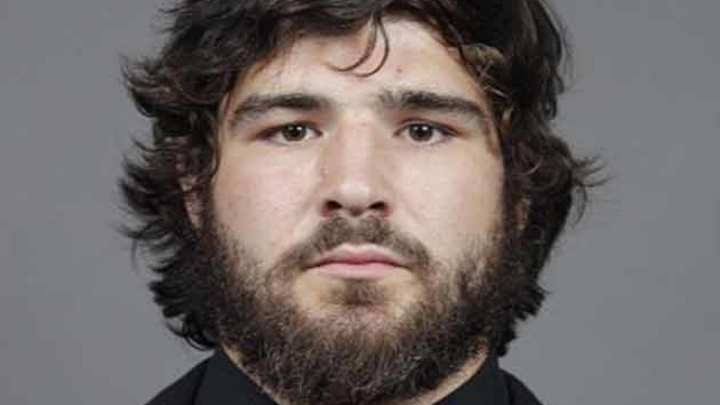Missing OSU Football Player Found Dead: A Tragic Loss for the Ohio State Communit

Missing OSU Football Player Found Dead: A Tragic Loss for the Ohio State Community
Missing OSU Football Player Found Dead: A Tragic Loss for the Ohio State Community

The Ohio State University (OSU) football program and the entire collegiate sports world were shaken by the tragic news of a missing player’s death.
The discovery of the body of the student-athlete, whose identity had not been immediately disclosed, has left family, friends, teammates, and fans grappling with a deep sense of loss and mourning.
This article provides a reflection on the circumstances surrounding his disappearance, the emotional impact on those involved, and the broader implications for the community.
The Discovery of the Missing Player
On [insert date], news broke that a player from the OSU football team had gone missing under unclear circumstances.
Initial reports stated that the athlete had been last seen on [insert last known location or time] and had not been heard from since. The university quickly launched a search operation, and local authorities, including law enforcement and emergency responders, joined efforts to locate the student.
Over the course of [insert time duration], concern grew as the search expanded. Volunteers, fellow students, and even OSU football team members were seen rallying together in hopes of finding their teammate.
The university issued statements asking for any information that might assist in locating the player, and students and faculty alike expressed their concerns on social media, showing solidarity with the family and the athletic department.
However, despite these efforts, a sense of dread began to set in as hours turned to days without any significant updates.
The player’s teammates held vigils and prayers, their emotional states visibly stricken by the uncertainty and fear surrounding their friend’s whereabouts. It wasn’t until [insert specific time/date], when the authorities confirmed the tragic discovery of the player’s body in [insert location]. The death was confirmed to be the result of [insert cause if known, such as foul play, natural causes, or an accident].
Impact on the Ohio State Football Program
The death of a student-athlete, particularly one from such a high-profile and beloved program as OSU’s football team, reverberates deeply within the university’s community.
The Ohio State football program, led by head coach [insert name], has long been one of the most respected programs in college football, with a tradition of excellence both on and off the field. The loss of a young, talented player—who had so much potential—sends shockwaves through the team, coaching staff, and fans who had followed his career.
Teammates, in particular, are often the first to feel the full brunt of such devastating news.
Football is a sport built on camaraderie, teamwork, and trust, and losing a teammate is akin to losing a member of one’s family. In the days following the discovery of the player’s body, OSU football players expressed their grief and shock through social media tributes, public statements, and gatherings.
Their collective voice echoed sentiments of disbelief and sorrow for the loss of a player who had been not only a key part of the team but also a close friend and confidant to many.
Coach [insert name], who had known the player since his recruitment, addressed the media, holding back tears as he spoke about the legacy the athlete would leave behind, both on the field and in the lives of those who knew him. The program, like many collegiate sports organizations, understands that athletes are not just figures of athleticism but young people with dreams, ambitions, and personal challenges. This tragedy has served as a painful reminder of the pressures and emotional toll that come with being in the public eye, especially for those who live in the intense spotlight of major college sports.
The Emotional Toll on the OSU Community
Beyond the football program, the loss of this student-athlete has rippled through the broader OSU community. Family members, friends, classmates, and faculty members are struggling to process the magnitude of the loss. The student body, which had been excited about the football season, has come to a standstill as the mourning process begins.
In times of tragedy, the university community often rallies together, offering support through counseling services, memorials, and vigils. OSU quickly announced the availability of grief counseling for students who may be affected by the player’s death. Campus-wide memorials were organized, where members of the OSU family—students, faculty, staff, and alumni—gathered to honor the life and legacy of the fallen athlete. Moments of silence were held in various campus spaces, including a touching tribute at a major home game where the entire stadium stood in honor of the player’s memory.
The emotional weight of this event extends well beyond the immediate circle of the athlete’s family and friends. The loss of someone so young and full of potential serves as a stark reminder of the fragility of life. In the aftermath of the tragedy, there were conversations about mental health, the pressure faced by student-athletes, and the need for greater emotional support structures within college sports programs.
The Broader Implications of the Tragedy
The untimely death of this OSU football player raises important questions about mental health and the well-being of student-athletes. The intense pressure to perform, the scrutiny from the media, the demands of training and academics, and the public nature of their lives can create a heavy emotional burden that is often overlooked. There have been growing calls for universities and athletic programs to do more to support the mental and emotional health of student-athletes.
While the cause of the player’s death is still under investigation, the tragedy has prompted discussions about the need for better mental health resources for athletes, not only for physical injuries but also for emotional and psychological well-being. Advocates for student-athletes stress that these young men and women, despite their incredible physical abilities, are still navigating the same challenges as any college student, but with the added weight of national attention and high expectations.
Programs that prioritize holistic support, including counseling, mental health initiatives, and open communication about struggles, could make a significant difference in preventing future tragedies. The death of this player has shone a spotlight on the importance of creating environments where student-athletes feel empowered to speak openly about their struggles and seek the help they need without fear of stigma.
A Legacy Remembered
Though this tragic event has left a profound void, the memory of the player will endure through the hearts and minds of those who knew him best. Teammates will carry forward his spirit, drawing inspiration from the memories they shared, while the OSU football community and fans will forever remember the promising career that was cut short too soon.
In the weeks and months following this devastating event, the university will no doubt hold memorials and pay tribute to the life of the student-athlete, honoring both his achievements on the field and the impact he had on the people around him. For those who were closest to him, his memory will live on through the stories, the camaraderie, and the love shared during his time at OSU.
Ultimately, the legacy of the player will serve as both a reminder of the joy he brought to those who knew him and as a poignant reflection on the deep, often invisible struggles that many student-athletes face. Through this tragic loss, there is hope that a broader conversation about mental health will continue to evolve, and that future generations of athletes will feel supported, valued, and understood.
Conclusion
The death of the missing OSU football player is a heart-wrenching tragedy that has left the Ohio State University community, the football program, and the family and friends of the young athlete in profound grief. While the pain of his loss will be felt for years to come, the incident also highlights the need for greater awareness and resources dedicated to the mental and emotional health of student-athletes. In time, this tragedy may serve as a catalyst for positive change within the world of collegiate athletics, ensuring that future athletes are better supported in all aspects of their lives.





